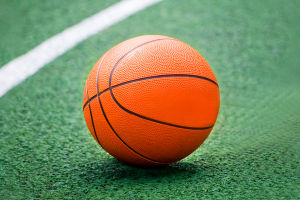Basketball shooting is a fundamental skill that every player must master to excel on the court.
Proficient shooting not only enhances individual performance but also positively impacts the team's overall effectiveness.
Mastering shooting skills demands time and patience. However, with the right approach and consistent practice, anyone can become an exceptional shooter.
The fundamental aspects of shooting include the preparation posture, the power process, and the follow-through. Let’s begin with the preparation posture. To prepare for a shot, the athlete should establish a stable base by positioning the feet shoulder-width apart, with the toes slightly angled towards the basket.
This stance aids in maintaining balance during the shot. The knees should be slightly bent, and the torso should lean forward slightly, which enables the utilization of the lower body’s strength in the shooting process. The positioning of the hands is also crucial.
The shooter should hold the basketball in front of the chest while gently supporting it with the non-shooting hand. This technique ensures that the basketball remains stable and helps prevent deviations from the target.
The power process is a critical component of shooting technique. When executing a shot, the athlete generates power primarily from the legs. The strength from the lower limbs is transferred to the upper body to propel the basketball.
The arm should extend upwards and then quickly contract to guide the basketball toward the basket. Wrist movement is also vital during this phase.
Proper wrist action helps the basketball achieve the correct arc in the air, thereby increasing shooting accuracy. The wrist should remain naturally relaxed, and force should be applied as the basketball leaves the fingers.
Besides these basic movements, shooting accuracy is influenced by several additional factors. For instance, the athlete’s eyes should be focused on the back edge of the basket, aiding in judging the shot’s angle.
Shooting practice involves more than just repeating shots; it encompasses feeling the basketball, controlling power, and enhancing accuracy. Practicing from various distances and angles provides diverse training opportunities.
Post-shot self-analysis is essential to identify areas for improvement and make necessary adjustments. Through ongoing practice and fine-tuning, athletes can progressively enhance their shooting proficiency.
Moreover, psychological factors play a significant role in the shooting process. A positive mental state aids athletes in staying calm and focused, thus improving shooting accuracy. Performance pressure during a game can often impact an athlete's effectiveness.
Therefore, simulating game environments and situations during training can help athletes better adapt to the actual game atmosphere. Continuous training and real-game experiences contribute to increased self-confidence, reduced anxiety during crucial moments, and improved performance during games.
Improving basketball shooting skills requires long-term dedication and persistent practice. Only through scientific training methods and effective psychological strategies can players achieve a high level of shooting proficiency in basketball games.


